Have you recently stumbled upon a beautiful peacock feather and are now curious about its symbolism? As a passionate researcher of symbolism and a knowledgeable expert on peacock feathers, I can help you uncover the hidden meanings behind this stunning feather. I’m also thrilled to see that you share my interest in this fascinating topic!
In this article, the symbolism of the peacock feather meaning will be fully explained, including its cultural and spiritual significance. This knowledge can provide insight and inspiration to you, helping you to connect with the deeper meanings of life and nature.
Table of Contents
- 1 Key Takeaways
- 2 The top 7 spiritual meanings of the peacock feather
- 3 Peacock totem
- 4 Peacock power animal
- 5 In Meditation and Spiritual Practices
- 6 Peacock feather symbolism in different cultures
- 7 Famous Artworks, and Monuments Featuring Peacock Feathers
- 8 Peacock feather eye meaning
- 9 Peacock Feather Tattoo
- 10 Seeing Peacock Feathers in a Dream
- 11 Conclusion
- 12 FAQ
Key Takeaways
- Peacock feathers have been used for mystical and religious purposes across various cultures and religions. They symbolize balance, beauty, immortality, awakening, self-confidence, spirituality, resurrection, self-love, and perception.
- Peacock feathers are believed to possess spiritual significance and are used in meditation and spiritual practices. They are also used as protection, guidance, and good fortune, and serve as symbols of leadership and authority.
- Peacock feathers have a rich cultural significance, with different cultures associating them with different meanings. They have been used in famous artworks and monuments, and continue to feature prominently in pop culture, including fashion and tattoos. The eye markings on peacock feathers represent protection and vigilance, and seeing peacock feathers in a dream can have various meanings.
The top 7 spiritual meanings of the peacock feather
While the peacock symbolism already carries a strong meaning, rituals have been conducted over centuries to harness peacock feathers’ power and positive energies. It has been revered for thousands of years as a symbol of beauty, divinity, and power.
Here’s a breakdown of what peacock feathers spiritually mean.
Protection
Like every other bird, the peacock uses its feathers for warmth and protection. Several traditions say that wearing one around your neck safeguards you from all negative energies.
The peacock feather gives us the courage to protect and defend our loved ones. Parents are expected to shelter their children from threats and harm.
Wisdom
Featuring tails of varying colors and patterns, the peacock is undoubtedly one of the most eye-catching birds in the world. As peacocks have the “eye” pattern on their plumage, several traditions see them as a powerful symbol of wisdom.
The peacock feather allows us to identify risks and guide us in becoming wiser as we tackle them. It reminds us that we can also gain deep-seated knowledge through data, research, and our teachers.
Good fortune
The lush appearance of peacock feathers has long made it a symbol of prosperity and abundance. If you stumble upon this feather, you will enjoy luck in both love and finance.
Beauty
Along with its vibrant green, yellow, and blue color and unique and extremely gorgeous patterns, peacock feathers are perhaps the most attractive on Earth. This indicates that you are gifted with beauty, inside and out, when you find one.
The peacock feather reminds us that while physical beauty is a plus, nothing is more attractive than having a beautiful and kind heart.
Healing
Like every other bird, the peacock goes through a period of molting once every year. Their ability to replace old feathers with new ones makes them a symbol of renewal and regeneration. This energy is used to heal people of their diseases, imbalances, and health complaints.
Calling the shots
Peacocks lure their female into being their mate with the beauty of its majestic feathers. Often seen walking with regal confidence, many consider them symbols of leadership and authority. Their long robe-like feathers also made them symbols of royalty.
Peacock feathers urge us to motivate and guide others to help them realize their goals. This colorful feather inspires us to use our leadership skills to improve work efficiency and achieve our mission.
Peacock totem
The majestic peacock, embodying the essence of personal power, serves as a symbol of how our strength should be harnessed for the betterment of all. Adorned with a proud strut, the peacock totem feather inspires us to embrace our individuality, foster our talents and showcase confidence in who we are.
The male bird, with its magnificent feathers, is regarded as a symbol of strength, beauty, and prosperity, radiating a mesmerizing aura of grace and poise. Emanating the radiance of the sun and the heat of the fire, peacock feathers are revered for their mystical properties in various cultures, being used in ceremonies and rituals to harness their sacred energy.
Peacock power animal
The peacock power animal is a symbol of authority. The peacock can be a helpful totem if you are working on increasing your leadership skills.
The peacock also represents beauty, abundance, and fertility, so it can be a good spirit guide for those looking to improve their luck in developing romantic relationships.
For centuries, peacocks have been used as symbols of nobility, beauty, and power. Many people have called on the peacock feather’s power to increase their confidence and self-worth.
In Meditation and Spiritual Practices
Peacock feathers have long been associated with spirituality and meditation, believed to possess powerful energies that can help individuals on their spiritual journey.
Meditation Tools and Focal Points
One way to incorporate peacock feathers into meditation is by using them as a focal point. By concentrating on the intricate patterns and iridescent colors of the feather, the mind can find a sense of calm and focus, allowing for a deeper meditative state.
Spiritual Symbolism
Peacock feathers also carry significant spiritual symbolism, representing qualities such as rejuvenation, immortality, and spiritual awakening. By incorporating peacock feathers into personal altars or sacred spaces, individuals can harness their positive energies, helping to facilitate spiritual growth and enhance their connection to higher consciousness.
Peacock feather symbolism in different cultures
The peacock is a beautiful bird. Different cultures across the globe consider its feather to be a mythical & powerful symbol.
Ancient Greek
The peacock symbolism in ancient Greece is considered Goddess Hera’s patron bird, and in Greco-Roman mythology, the peacock tail has the “eyes” of the stars. The peacock feather was considered a tribute to Argus, the one-hundred-eyed giant. This giant was said to have guarded Io once when she transformed into Heifer.
According to Greek mythology, Hera had placed ‘eyes’ on peacock feathers. It was from Argus that Hera managed to create the peacock. Hence, its tail feathers symbolize heaven’s vault, while the ‘eyes’ present on the feather represent stars. It also symbolizes wisdom & knowledge of the heavens. The peacock is an important bird for Hera, so she chose a pair to pull her chariot.
The peacock symbol was regarded as the symbol of immortality in ancient Greece. This is because its flesh after the peacock’s death was assumed not to decay. According to Pythagoras, the Greek mathematician & philosopher, Homer’s soul is assumed to have gotten into a peacock. This reflects the significance of the Greek poet’s centuries-old fame.
Hindu mythology
According to Hindu mythology, the peacock feather symbolism is also known as Mor Pankh, which is an auspicious symbol. Keeping peacock feathers at home is believed to bring prosperity & good luck. Peacock feathers in Hindu mythology are related to Goddesses Lakshmi. The feathers also adorn the flute & head of Lord Krishna. Mythology states that the peacock had presented their feathers to Lord Krishna.
According to Hindu belief, Garuda had created the peacock or the Mayura from his feathers. Several Hindu scriptures regard the bird as a time cycle symbol.
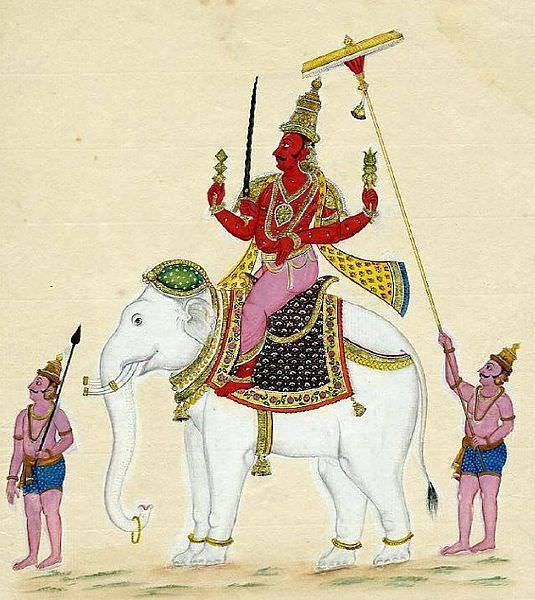
Peacocks were once believed to have dull feathers! The bird had spread its feathers wide open in a battle between Lord or god Indra & Ravana. This allowed Indra to hide & save himself from Ravana’s wrath. In return, he made the feathers iridescent. Lord Indra sits on a majestic peacock throne.
Being also the national bird of India, Hindu gurus use the peacock totem and peacock feathers to perform their discourses and pass their aura to that of their followers. The peacock feather symbolism also comes with extraordinary powers. Wearing it, you can derive hypnotizing powers. It also safeguards you from the evil eye while destroying negativity like jealousy, anger, and greed. Vastu Shastra also makes use of it. Keeping peacock feathers on the locker room’s southern side can help you derive wealth.
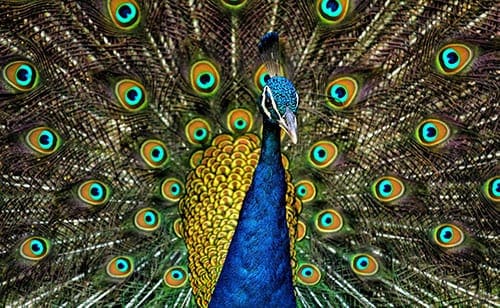
Christian tradition
The timeless beauty of a peacock has stirred the Christian imagination for centuries, representing immortality and resurrection. In early Christianity, it was seen as an emblem of Christ’s triumphant return to life after death -a reminder that believers too have hope in everlasting life.
As part of its symbolism in the Christian tradition, peacocks are seen as guardians to divine realms. According to the Book of Revelation, they guard a majestic ‘Tree of Life’ adorned with eternal leaves – an image representing eternity in paradise beyond death.
Native American culture
Peacock feathers can be found in many Native American cultures, representing much more than just physical beauty. They are believed to provide insight into our spiritual realm and understanding of the world around us; they also represent change and renewal– acting as a powerful instrument for transformation during meaningful rituals.
Symbolizing protection and good health, the peacock feather is a treasured cultural relic in many Native American communities. It’s no wonder why — its use in rituals to ward off evil spirits as well as bring success during hunts has helped ensure prosperity for generations of people.
The peacock feather symbolism in Islamic culture
The peacock has held an important place in Islamic culture for centuries. Known not only for its vivid and captivating plumes, the majestic bird stands as a reminder to those who may become lost in their own vanity or pride – a poignant warning of what happens when one’s ego exceeds reason.
Featuring prominently both artwork and literature alike throughout Islam’s long history, it is clear that this avian icon carries great significance for many believers today.
Islamic mysticism teaches that there is great spiritual importance attached to peacock feathers. This majestic bird has been thought of as a symbol of power, divine grace, and protection since the concept of ‘the Peacock Throne’ was introduced; this throne represented the seat from which God’s authority mediated our world.
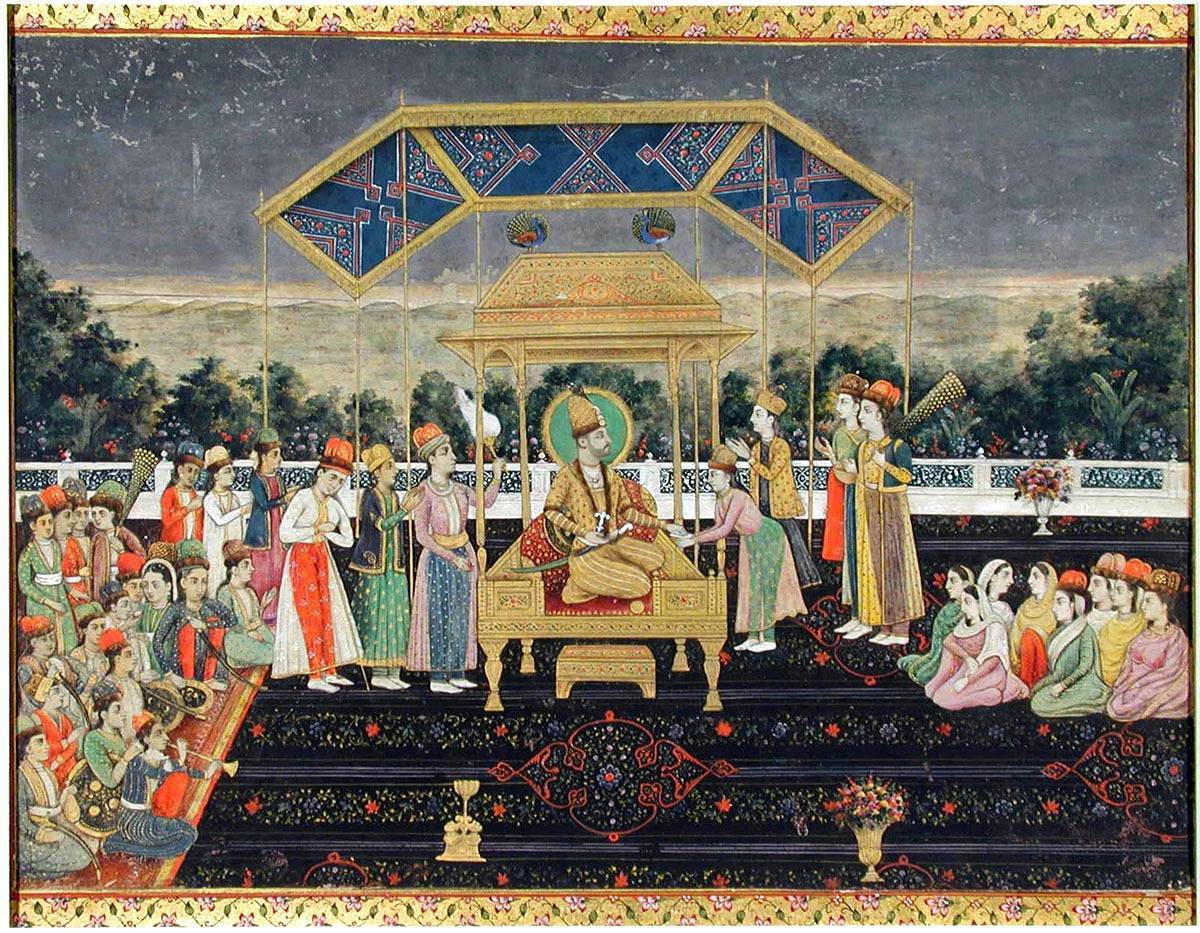
Famous Artworks, and Monuments Featuring Peacock Feathers
The Peacock Room by James McNeill Whistler
One such example is the famous “Peacock Room” created by American artist James McNeill Whistler in the late 19th century. The room, which was originally a dining room in the London home of Frederick Leyland, has walls adorned with intricate gold peacock designs, with the feathers of the birds creating a mesmerizing backdrop. The room was later acquired by American industrialist Charles Lang Freer and is now on display at the Freer Gallery of Art in Washington, D.C.
By incorporating peacock feathers into various art forms, these artists and architects have not only paid tribute to the beauty and symbolism of the feathers but also contributed to their enduring legacy as an iconic and inspiring motif.
Architecture and Monuments
Peacock feathers have also been a prominent motif in architecture, particularly in Indian and Islamic styles. The famous Peacock Throne, once housed in Delhi’s Red Fort, was a symbol of the Mughal Empire’s wealth and power.
In the stunning Sheesh Mahal (Mirror Palace) in Jaipur, India, peacock motifs are intricately carved and adorned with colorful glass, showcasing the regal and spiritual significance of the peacock across time and cultures.
Modern Interpretations and Pop Culture
In more recent times, peacock feathers have continued to feature prominently in various art forms, including fashion, interior design, and even tattoos. They have become a popular motif in haute couture, with fashion designers incorporating the vibrant colors and eye-catching patterns of peacock feathers into their creations. Additionally, peacock-inspired accessories and home decor items are often used to add a touch of elegance and opulence to living spaces.
Peacock feathers have also made their way into movies and television, often used as props or costume elements to convey a sense of luxury, nobility, or mysticism. They can be seen in various period dramas, fantasy productions, and even animated films, which pay homage to their timeless beauty and symbolism.
Overall, the enduring presence of peacock feathers in artworks, literature, architecture, and pop culture demonstrates their widespread appeal and significance across diverse cultures and historical periods. As a symbol of beauty, spirituality, and protection, they continue to captivate and inspire people around the world.
Peacock feather eye meaning
Peacock feathers have a beautiful, eye-catching design that is more than just aesthetically pleasing. These unique markings are actually symbolic of protection and vigilance — representing the “all-seeing” quality of perception beyond our physical world.
In some cultures, the eye markings on the peacock feather are seen as a symbol of watchfulness, reminding us to stay alert and mindful of our surroundings. In others, the eye markings are associated with the power of vision and perception, representing the ability to see beyond the physical world and to understand deeper spiritual truths.
Peacock Feather Tattoo
The peacock spirit animal and its feather meaning also appeared in different paintings many centuries before, during the rule of kings and queens in parts including Asia and Europe. People of various cultures started painting the peacock’s feather in different forms and designs as it revealed its attributes, such as vision, awakening, and royalty.
Bird tattoos are popular these days, and a peacock tattoo or a peacock feather tattoo is amazing & has different meanings. A few of them are given below:
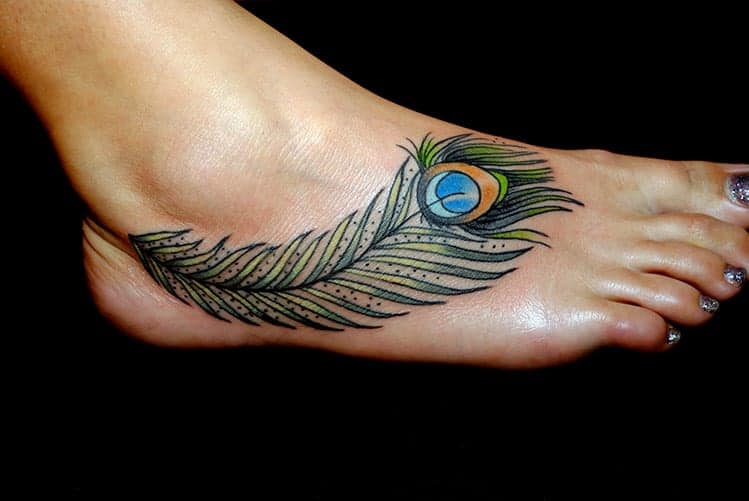
- Proud as the bird: It indicates that the bearer is proud of his talents and gifts.
- Enlightenment: It symbolizes rebirth, spiritual evaluation, and creativity.
- Symbol of protection: Peacock feathers are said to safeguard against evil spirits and negative energies.
- All-seeing eye: Since the Greeks refer to it as a bird having 100 eyes, having the peacock feather as a tattoo means you are intuitive, aware, and open-minded.
- Pregnancy: According to ancient Chinese beliefs, if a peacock sees a woman suffering from conceiving problems, a peacock feather can help her get pregnant. The tattoo is also said to help in easy labor and bring fortune to the baby.
Seeing Peacock Feathers in a Dream
Dreaming about the feathers of this majestic bird can have several meanings. Many believe that it can be a warning of people trying to seduce you with their sweet talk and beauty.
Since they are used to land a potential mate, it may also signify that you are getting married soon or about to land a new project.
If you come across a peacock feather lying on the street, you may experience luxury and good fortune.
Seeing the peacock in your dream signifies that there will be good and positive changes in life.
As the peacock changes the appearance of its feather time by time, dreams about peacock feathers also indicate a period of transformation that is about to take place.
White and Golden Peacock Feathers
Seeing white peacock feathers have meanings such as innocence and purity. It also signifies that you will have good luck in your marriage.
A white peacock feather in your dream also represents the connection between yourself and the Divine. On the other hand, seeing a golden peacock in a dream tells that your life will be filled with riches and prosperity as the golden color is a precious color.
Conclusion
The color, shape, size, and way peacock feathers are displayed have varying meanings in different cultures. Knowing how to read these symbols will help you understand why people react in different ways when seeing peacocks or their feathers. These messages can also be found in a dream if you see them on your journey through sleep.
Also, check the eagle feather meaning, the hawk feather meaning and check here for various feather color meanings.
In case you’re interested, read here more about the general feather symbolism.
[Video] WHY PEACOCK FEATHERS Are Lucky In Your Home! Luck For Lovers, Protection, Money, and Attraction!
FAQ
Are Peacock Feathers Bad Luck?
No, peacock feathers are not bad luck! The superstitious roots behind wearing peacock feathers as an article of clothing or hair decoration have their origins in ancient people who believed that when a person wore this rainbow-colored plumage, they would be cursed by the devil himself. By wearing them, one was inviting evil to take control over them instead of good spirits.
What is the peacock feather angel meaning?
The peacock feather is associated with angels in some spiritual traditions and is seen as a symbol of their presence, beauty, grace, and protection.u003cbru003eIn Christian beliefs, the feather evokes Gabriel, the powerful archangel and messenger from God; in other belief systems, it symbolizes guidance from a ‘peacock angel’ of their faith.
Is there a peacock feather superstition?
Picking up a peacock feather has long been associated with more than just its beauty; certain cultures believe that it can bring bad luck and even illness. Holding such beliefs, those who come across these feathers have traditionally left them undisturbed on the ground.
What is the biblical meaning of peacock?
In the Bible, peacocks are mentioned in association with King Solomon, who received them as gifts from other rulers. Although not explicitly symbolic, peacocks have come to represent themes such as beauty, wisdom, and immortality, as well as spiritual awakening and resurrection, due to their ability to shed and regrow their beautiful plumage each year.
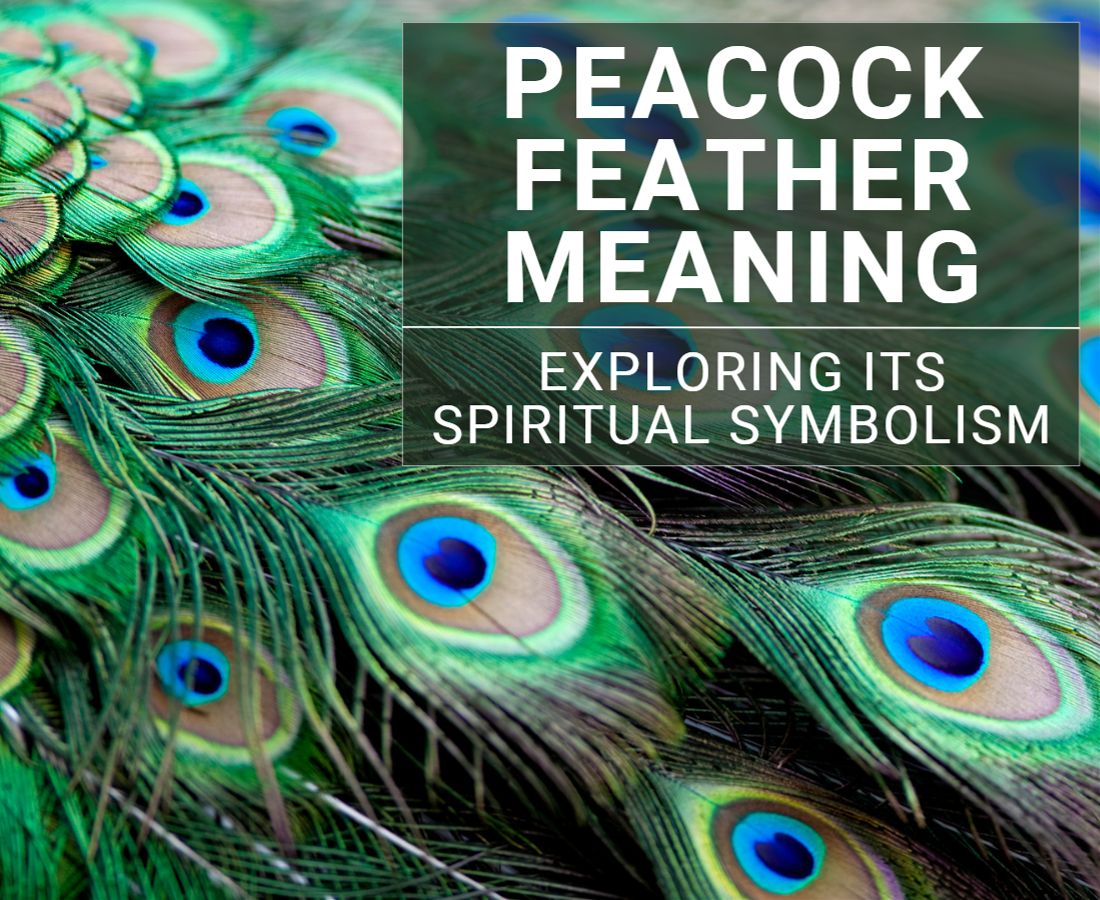
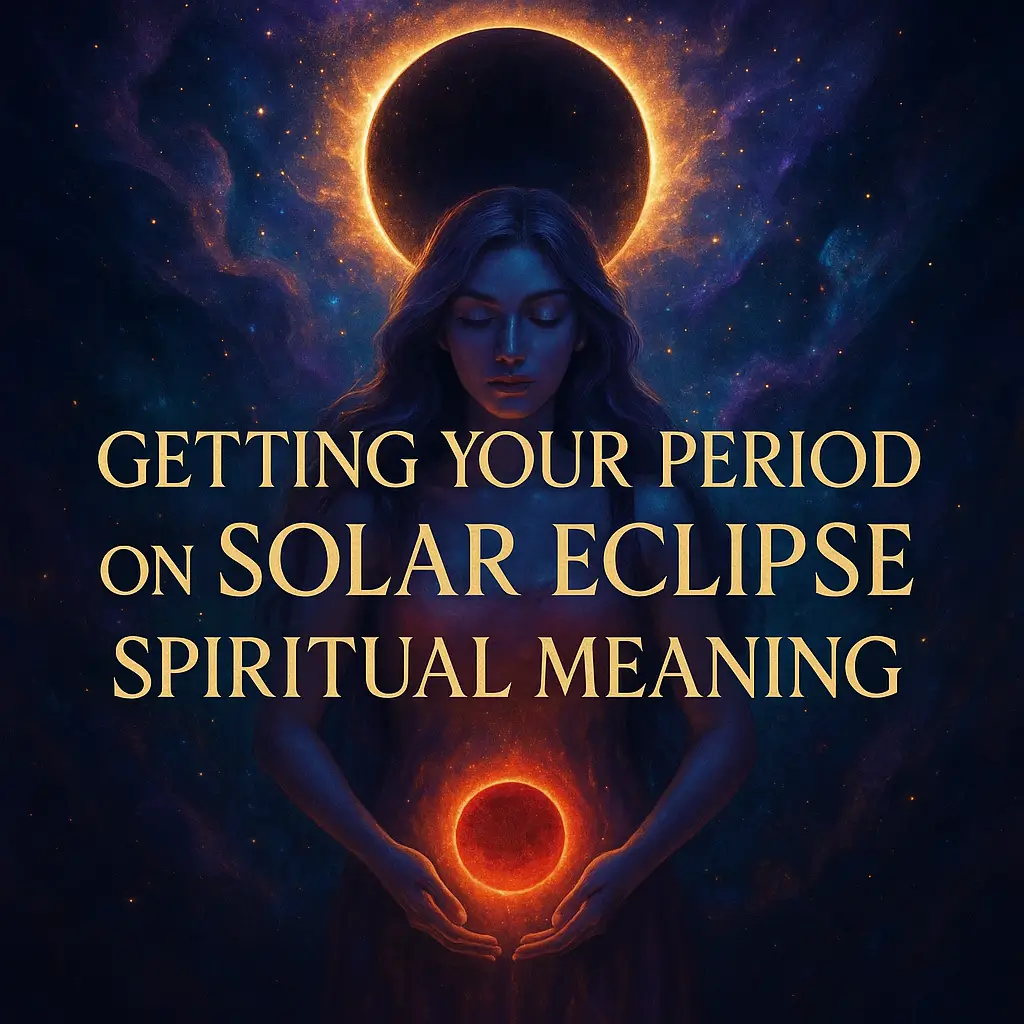
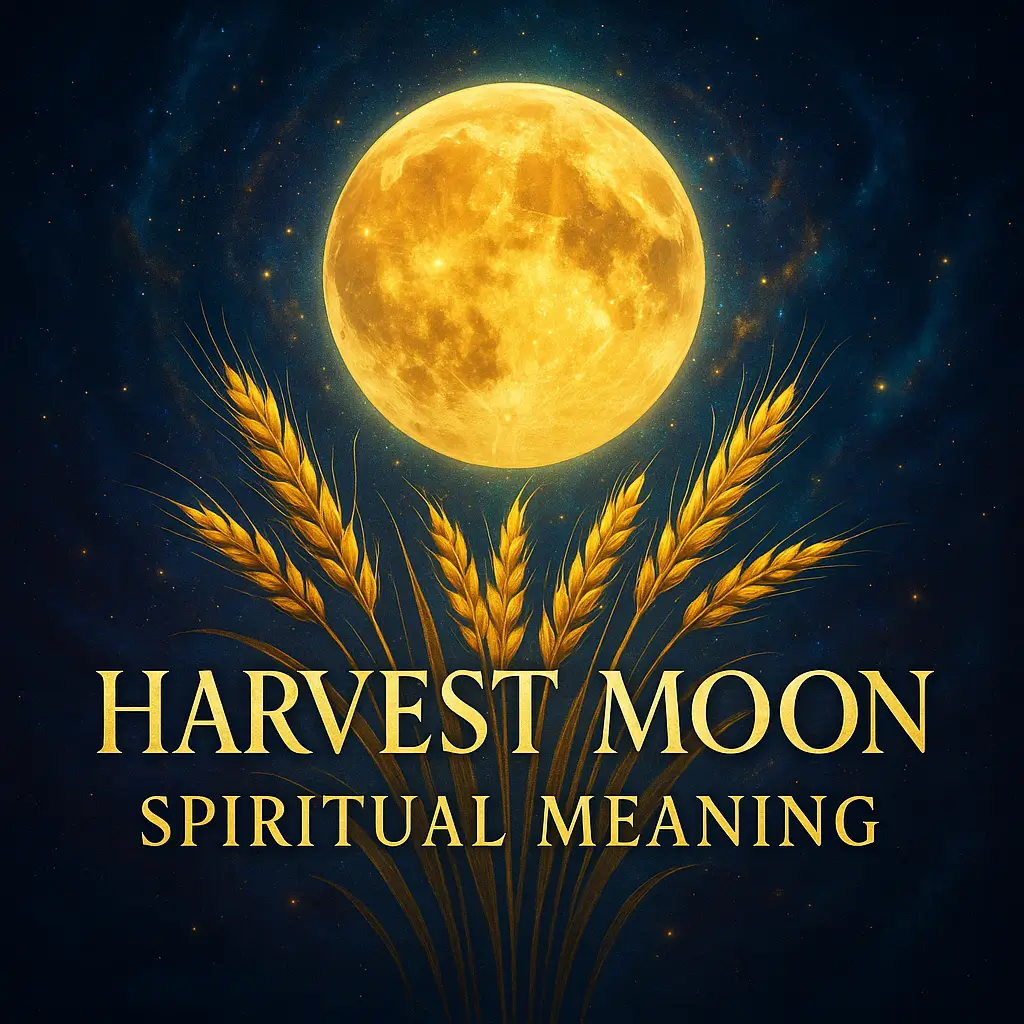

My friend found a white peacock feather today on 11/20/21 in the zoo where the albino peacock was but then she gave it to me… No dream but it’s a true story… Now I have in my room… What does it mean??